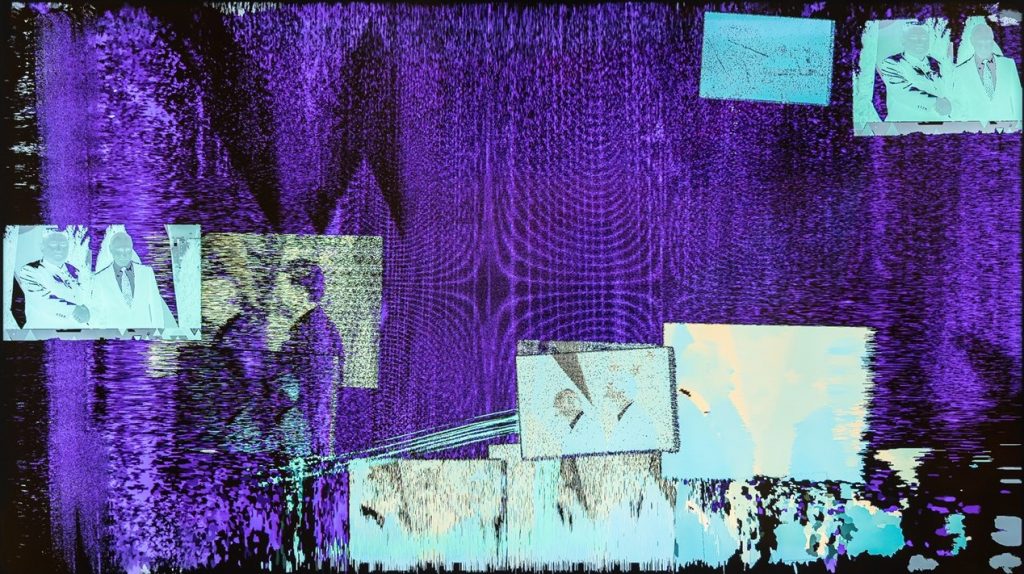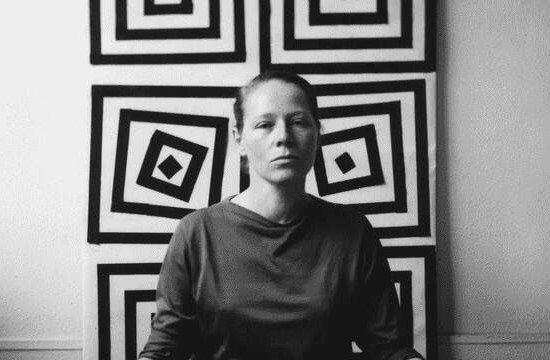A brief history of one of today’s most exciting art forms

Generative art is an artistic practice that has been around since the 1960s, but has become increasingly popular in recent years. Generative artists utilise digital technologies to create artworks that are determined by algorithms or other predetermined procedures.
The artform is often associated with very modern digital technologies, but the concept of algorithmic art has been around for decades. In the 1960s, pioneers such as Manfred Mohr, Frieder Nake, and Georg Nees explored the possibilities of using computer algorithms to generate visual art. They created abstract artworks that were based on pre-set of rules, allowing for the creation of complex, interesting patterns and fractals. Other artists like Vera Molnar and Barbara Nessim used algorithms to generate drawings and illustrations. Molnar, who was part of the GRAV movement along with the likes of Julio Le Parc, was captivated by the idea of the computer as a tool for creating new forms and structures, rather than simply reproducing existing ones which she saw other artists using traditional mediums doing.
One of Vera Molnar’s most iconic works is “Generative Art n.1” (1968). The artwork is a black and white print that shows a series of geometric shapes that are arranged in a seemingly random way. The shapes are created by using a set of algorithmic rules and this artwork can be considered as one of the first examples of generative art. Molnar’s work was featured in many international exhibitions and retrospectives, including the Museum of Modern Art, New York, the Centre Georges Pompidou, Paris, and the ZKM Center for Art and Media in Karlsruhe.

In the 1970s and 1980s, generative art started to become more popular and accepted by the art community. Artists such as Roman Verostko and Jean-Pierre Hebert created works that used algorithmic processes to produce beautiful, intricate artworks. This movement was further popularized in the 1990s, with the emergence of digital media. Artists such as Casey Reas and Marius Watz began creating digital art that relied upon algorithms and input from the viewer. Exploring the relationship between code, process, and the visual outcome, Reas may be best known in these earlier years for his “Process Series”. Each print was a unique outcome from the rules and algorithm, making the code and process of the artwork an essential part of the final piece.
In the 2000s and 2010s, generative art continued to evolve and become more accessible. There was an emergence of interactive artworks and performance art, which allowed for audience participation and further exploration of the medium. Many artists began experimenting with open-source software to create generative art, making it more widely available to the general public. Continuing his “Process” works, Casey Reas adopted this idea of interaction with the audience, in “Process 10”, from 2003, he created an interactive installation that allows viewers to manipulate the visual output of the algorithm, and in “Process 11”, from 2007, he exhibited an interactive screen that creates a dynamic light installation based on the movement of audience.
In addition to his solo work, Reas co-created the open-source software Processing, which is one of the aforementioned key open-source programming environments and visual development tools adopted by the generative artist community. He is currently a professor at UCLA and in recent years (2020), he co-founded Feral File, a popular hybrid between an online gallery, marketplace, and publisher of NFT artist editions.

In recent years, generative art has continued to evolve, with artists exploring new technologies such as machine learning and artificial intelligence to create even more complex and dynamic works. The rise of digital platforms such as Instagram and Twitter have also given generative artists a wider audience, and has helped to make generative art more accessible to the art (and non-traditional art) community. This increase in exposure and popularity has only been exacerbated by a global increase in digital collectors prompted by the rise of cryptocurrencies and NFTs. Subsequently we have seen the growth to art-world prominence of leading-edge contemporary artists such as Refik Anadol and Daniel Canogar, being collected by the largest museums, institutions and private collectors: Slowly but surely taking steps towards full acceptance of digital art by the traditional art world.
Often using live-streaming data from the world around us, including news, trending Google search terms and financial information, Daniel Canogar’s works are not only visually striking, but also raise important questions about the relationship between technology and our modern human experience. His style of generative art challenges the viewer to consider how technology and data is shaping our perception of the world.

In a work like “Oculus”, a building-sized generative animation which covers the surface of the Novartis building in Basel, Switzerland, we see data on polar ice caps melting, carbon dioxide level, active fires and global temperature anomalies visualised on a mass scale. We move from becoming data-blind in the face of the huge volume of climate data now available and thrown at us from all media channels, to a more emotional, sensorial and so intelligible experience of what is happening to our planet in real time.
Generative art is an ever-evolving medium that continues to inspire, challenge, and delight audiences. Just as Canogar has been able to evolve the form of generative art once again, as more new technologies emerge, so too will opportunities for other artists to push boundaries and develop the artform further. While the field is still relatively new, it has already had a significant impact on the art world, and it will continue to shape the way we think about and create art in the future.
